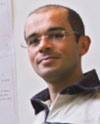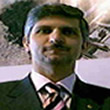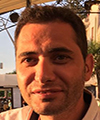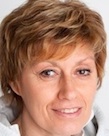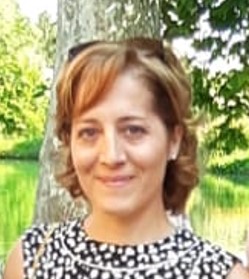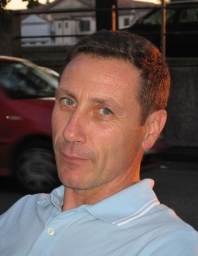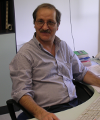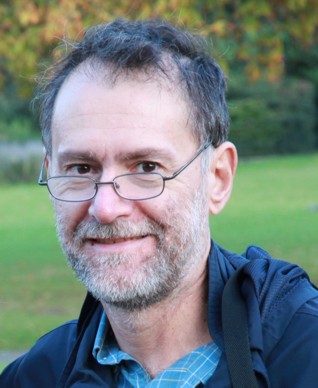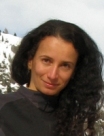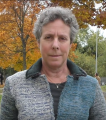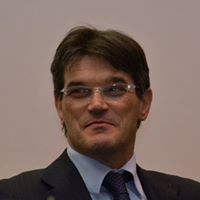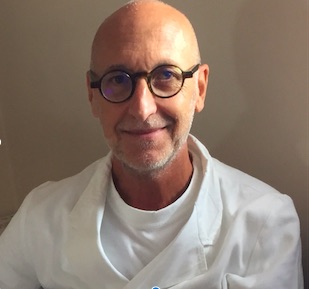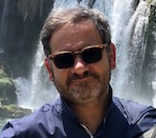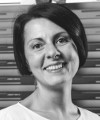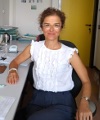Studying at the University of Verona
Here you can find information on the organisational aspects of the Programme, lecture timetables, learning activities and useful contact details for your time at the University, from enrolment to graduation.
Academic calendar
The academic calendar shows the deadlines and scheduled events that are relevant to students, teaching and technical-administrative staff of the University. Public holidays and University closures are also indicated. The academic year normally begins on 1 October each year and ends on 30 September of the following year.
Course calendar
The Academic Calendar sets out the degree programme lecture and exam timetables, as well as the relevant university closure dates..
| Period | From | To |
|---|---|---|
| I SEMESTRE | Oct 1, 2018 | Jan 25, 2019 |
| II SEMESTRE | Mar 4, 2019 | May 31, 2019 |
| Session | From | To |
|---|---|---|
| Sessione invernale | Jan 28, 2019 | Feb 28, 2019 |
| Sessione estiva | Jun 3, 2019 | Jul 5, 2019 |
| Sessione autunnale | Aug 26, 2019 | Sep 30, 2019 |
| Sessione straordinaria | Jan 27, 2020 | Feb 28, 2020 |
| Session | From | To |
|---|---|---|
| Sessione invernale | Mar 18, 2018 | Apr 5, 2018 |
| Sessione estiva | Jul 8, 2019 | Jul 26, 2019 |
| Sessione autunnale | Oct 14, 2019 | Nov 5, 2019 |
| Sessione straordinaria | Mar 16, 2020 | Apr 3, 2020 |
Exam calendar
Exam dates and rounds are managed by the relevant Exercise Science Teaching and Student Services Unit.
To view all the exam sessions available, please use the Exam dashboard on ESSE3.
If you forgot your login details or have problems logging in, please contact the relevant IT HelpDesk, or check the login details recovery web page.
Academic staff
 paola.cesari@univr.it
paola.cesari@univr.it
 paolo.dellaquila@univr.it
paolo.dellaquila@univr.it
 nicola.rovetti@univr.it
nicola.rovetti@univr.it
 fabio.sartori@univr.it
fabio.sartori@univr.it
Study Plan
The Study Plan includes all modules, teaching and learning activities that each student will need to undertake during their time at the University.
Please select your Study Plan based on your enrollment year.
1° Year
| Modules | Credits | TAF | SSD |
|---|
2° Year activated in the A.Y. 2019/2020
| Modules | Credits | TAF | SSD |
|---|
| Modules | Credits | TAF | SSD |
|---|
| Modules | Credits | TAF | SSD |
|---|
| Modules | Credits | TAF | SSD |
|---|
1 module among the followingLegend | Type of training activity (TTA)
TAF (Type of Educational Activity) All courses and activities are classified into different types of educational activities, indicated by a letter.
Physical activity in natural environment (2018/2019)
Teaching code
4S004073
Teacher
Coordinator
Credits
3
Language
Italian
Scientific Disciplinary Sector (SSD)
M-EDF/01 - PHYSICAL TRAINING SCIENCES AND METHODOLOGY
Period
II SEMESTRE dal Mar 4, 2019 al May 31, 2019.
Learning outcomes
The course intends to provide adequate knowledge of sports and motor activities that can be carried out in a natural environment and will have the main purpose of finalizing these activities to aspects such as: improving the fitness of the person; opportunities to improve individual athletic performance; improvement of teamwork; improving the quality of life of the person; education and motor development. Some practical activities in the natural environment will be treated both theoretically and practically.
A further objective of the course is to provide basic knowledge in order to manage, organize, promote activities in a natural environment, seeking to fully exploit the knowledge and skills of a graduate in motor science through practical application.
In particular, reference will be made to user targets such as elderly people and people with disabilities.
The specific objectives of the course are the presentation and analysis of the different aspects of the following activities:
• Trekking, winter hiking with snowshoes, Nordic walking and other modes of movement that can be carried out in a natural environment.
• Hebertism and the "natural method": from the foundations of physical education to a new way of carrying out motor activity.
• Orientation, topography and knowledge of resources and limitations of the natural environment
• Climbing, a complete sport that requires motor, psychological and emotional skills.
• Adventure as the main tool of human training, from outdoor-education to outdoor training.
For each field of sport / motor sport presented, the course intends to provide to each trainer, skills related to:
• promotion and organization of the activity
• design and choice of appropriate activities according to the target user target
• management and management of group activity
In addition, the following aspects will be developed in some cases:
• motion analysis and correct teaching
• Teamwork
• Identifying and managing emotional states of the person
Program
During the course each specific theme (activities listed above) will be dealt with in both practical and theoretical aspects.
The course will be organized in 8 hours of classroom lessons and 5 sessions of 6 hours for the practical part. Each practical meeting will take place in the natural environment and will deal with a specific discipline.
In theory classes the following topics will be dealt with:
1. Walking: the value of the journey as a physical activity with a short presentation of the metabolic and biomechanical aspects. Trekking, snowshoeing, Nordic walking and various walking techniques, presentation of technical aspects and materials to be usedTheory and practice of Hebert and of natural gymnastics. The value of motor and sport activities carried out in nature, the effects on the body and on the person.
2. The theory and practice of Georges Hebert and of natural gymnastics. The value of motor and sport activities carried out in nature; natural movements and their practice as maintenance and promotion of health; the effects of the practice of movement in the natural environment on the organism (earthing, etc.).
3. Preparation of motor activity in a natural environment. The use of planning, analysis of the situation and verification cards. The equipment according to the different types of proposals.
4. The organization of motor activity interventions in a natural environment, differentiated according to the different types of users: weak social groups, social groups with special needs (Neet, prisoners, etc.), children and the elderly. Adventure and sport in natural environments: the different professional figures that operate in environments and natural and the collaboration with these.
In practical exercises:
• The value of the movement performed in the open air, the strengths and variables from the controller and manage. Types of proposals and differentiation of contents according to different users (school, weak groups, risk subjects, special social groups). Characteristics of motor activities in natural environments and their management. How to enhance the resources of the natural environment in an educational logic with different categories of social groups.
• Physical movement and physical activity in nature: the natural ways of moving in the natural environment: walking, fast walking, trekking, running, running uphill, downhill running, fast running, long distance travel. Other ways of moving with the use of different equipment: snowshoes, skis, trekking poles, Nordic walking, etc. Orientation: use of maps, field orientation, compass, GPS, mobile apps.
• "Hebertismo" and natural gymnastics: how to interpret the natural environment according to a proposal of differentiated physical activity, from gymnastics to open air to Hebert paths in nature; The natural environment as an ideal setting for physical activity from the elderly to the child, from the professional athlete to people with special needs.
• Adventure, as an ever-present dimension of outdoor activities, and its usefulness and importance in education, in human growth and formation, in team work.
Management of adventurous situations; the risk and the danger; the different professionals with whom to collaborate in outdoor training projects.
Social groups at risk and adventure: social promotion projects and empowerment.
During the activity practiced, the theoretical elements presented above will be introduced, through an active comparison methodology. Students will be given a handout and after each meeting the students will be required to produce a written paper, develop different aspects for each activity, according to the indications that will be provided by the teacher.
| Author | Title | Publishing house | Year | ISBN | Notes |
|---|---|---|---|---|---|
| Andrea Bianchi | A piedi nudi | Edicicloeditore | |||
| Patrick Edlinger | Arrampicare | ||||
| Luigina Mortari, Rosanna Zerbato | Avventure in natura | Edizioni Junior | 2007 | ||
| Lucia Carpi | Educare in natura | Erikson | 2017 | ||
| Duccio Demetrio | Filosofia del camminare | Raffaello Cortina Editore | 2005 | ||
| Luca Gianotti | L'arte di camminare | 2011 | |||
| Riccardo Massa | Linee di fuga | 1999 |
Examination Methods
The course exam will take into account the different written reports that each student will elaborate after each of the experiences they make and end with a final synthesis interview of the entire program being conducted.
Type D and Type F activities
| years | Modules | TAF | Teacher | |
|---|---|---|---|---|
| 1° | Biochemistry for sport | D |
Massimo Donadelli
(Coordinator)
|
|
| 1° | Methodology of sport activities measures | D |
Luca Paolo Ardigo'
(Coordinator)
|
|
| 2° | Adapted motor learning | D |
Mirta Fiorio
(Coordinator)
|
|
| 2° | Advanced nutrition for sports | D |
Silvia Pogliaghi
(Coordinator)
|
|
| years | Modules | TAF | Teacher | |
|---|---|---|---|---|
| 1° | Sports and drugs | D |
Roberto Leone
(Coordinator)
|
|
| 1° | Forensic medicine and social security | D |
Aldo Eliano Polettini
(Coordinator)
|
|
| 1° | Neurological diseases and movement disorders | D |
Michele Tinazzi
(Coordinator)
|
|
| 1° | Research methodology applied to sport | D |
Barbara Pellegrini
(Coordinator)
|
|
| 1° | Statistics applied to movement sciences | D |
Maria Elisabetta Zanolin
(Coordinator)
|
|
| 2° | Neuromotor rehabilitation | D |
Nicola Smania
(Coordinator)
|
|
| 2° | Theory and pedagogy of nordic walking | D |
Barbara Pellegrini
(Coordinator)
|
|
| 1° 2° | Physiology of sport nutrition | D |
Silvia Pogliaghi
(Coordinator)
|
|
Career prospects
Module/Programme news
News for students
There you will find information, resources and services useful during your time at the University (Student’s exam record, your study plan on ESSE3, Distance Learning courses, university email account, office forms, administrative procedures, etc.). You can log into MyUnivr with your GIA login details: only in this way will you be able to receive notification of all the notices from your teachers and your secretariat via email and also via the Univr app.
Graduation
List of thesis proposals
Student mentoring
Gestione carriere
Orario lezioni
L’orario delle lezioni comprende
Lezioni Frontali in aula
Esercitazioni e laboratori
Questi ultimi sono organizzati per gruppi dai singoli docenti responsabili dei corsi.
L'orario è pubblicato nel portale studenti
Modalità di frequenza
Vige l'obbligo di frequenza al 70% come specificato nel Regolamento di ogni singolo corso di laurea e laurea magistrale:
Ulteriori informazioni:
L'accesso alle pagine Moodle dei singoli insegnamenti è vincolato alla compilazione del piano di studi.
App Univr Lezioni, FAQ e guida all'utilizzo sono disponibili al seguente link: orario-lezioni-e-modalita-di-frequenza
Comunicati: Avvisi per studenti
Internships
Internships are aimed at enabling students to gain direct knowledge of the world of work and to acquire specific professional skills.
Internships are carried out under the responsibility of an individual lecturer, and can be carried out in professional firms, public administration bodies and companies recognised by the University of Verona.
Any CFU credits gained by doing internships will be recognised and recorded by the University in accordance with the relevant University regulations in force (Regolamento d’Ateneo per il riconoscimento dei crediti maturati negli stage universitari).
For further information on internships, please go to: https://www.univr.it/it/i-nostri-servizi/stage-e-tirocini.
Linguistic training CLA
Certificazione medica di idoneità
Riferimenti normativi principali: DM 24 aprile 2013 art. 3, GU 169 del 20-07-2013; Decreto del Ministro della Salute dell’8 agosto 2014 e s.m.i.
Per frequentare le attività dei corsi di Laurea e Laurea magistrale di Scienze motorie è obbligatorio presentare la certificazione medica di idoneità fisica per attività sportiva non agonistica. La certificazione è necessaria per accedere alle attività pratiche-esercitative e al tirocinio.
à COME OTTENERE LA CERTIFICAZIONE
La certificazione - riportante l’indicazione che è stato eseguito l’ECG a riposo - può essere rilasciata da:
- centri o servizi di medicina dello sport delle ASL (ora ATS) e delle aziende ospedaliere
- istituti della Federazione Medico Sportiva Italiana
- centri pubblici o privati autorizzati:
- dai medici di medicina generale di libera scelta, relativamente ai propri assistiti;
- dal medico specialista in medicina dello sport.
L’ECG a riposo deve essere ripetuto annualmente.
E’ ammesso anche il certificato medico di idoneità alla pratica sportiva agonistica, per chi ne fosse già in possesso.
à SCADENZA PER LA PRESENTAZIONE
La certificazione medica deve essere prodotta al momento dell'immatricolazione e, comunque, entro l’inizio delle lezioni alla Segreteria Corsi di Studio Scienze motorie. Spetta agli studenti rinnovarla annualmente alla scadenza - per ogni anno di iscrizione in corso o fuori corso. La Segreteria effettuerà periodicamente dei controlli sulla consegna dei certificati.
NOTA: Studenti immatricolati a seguito di SUBENTRO/RIPESCAGGIO/TRASFERIMENTO IN INGRESSO: se non è possibile rispettare la scadenza di presentazione del certificato sopra indicata, avvisare la Segreteria Corsi di Studio Scienze, scrivendo all’indirizzo certmed.scienzemotorie@ateneo.univr.it
à MODALITA’ DI CONSEGNA
La certificazione va inviata alla Segreteria Corsi di Studio Scienze motorie dalla propria e-mail istituzionale nome.cognome@studenti.univr.it all’indirizzo certmed.scienzemotorie@ateneo.univr.it.
Student login and resources
Competenze linguistiche
DOPO LA LAUREA TRIENNALE
Per proseguire gli studi in uno dei corsi di Laurea Magistrale dell'ambito delle Scienze motorie è necessario possedere competenze linguistiche almeno di livello B1 informatizzato (o superiore) specificamente di lingua inglese, poichè i corsi di studio di livello superiore prevedono nel proprio piano didattico la presenza di insegnamenti o di moduli impartiti dai docenti direttamente in inglese.
Inoltre, tali competenze costituiscono requisito di accesso indispensabile per poter partecipare alla prova di ìngresso oppure per iscriversi ad una laurea magistrale.
La conoscenza di altre lingue diverse dall'Inglese NON può venire riconosciuta come "requisito" utile per l'accesso ai corsi di laurea magistrale. Tuttavia, la certificazione posseduta potrà essere valutata da un'apposita Commissione di docenti ed eventualmente riconosciuta in termini di crediti (CFU) a scelta dello studente, presentando domanda al momento dell'immatricolazione.
Si invita a leggere con attenzione i bandi di concorso annuali per l'ammissione ai corsi di laurea magistrali per maggiori informazioni - consultare nel sito del corso di studio anche la sezione "Iscriversi".
Modalità e sedi di frequenza
La frequenza è obbligatoria.
Maggiori dettagli in merito all'obbligo di frequenza vengono riportati nel Regolamento del corso di studio disponibile alla voce Regolamenti nel menu Il Corso. Anche se il regolamento non prevede un obbligo specifico, verifica le indicazioni previste dal singolo docente per ciascun insegnamento o per eventuali laboratori e/o tirocinio.
È consentita l'iscrizione a tempo parziale. Per saperne di più consulta la pagina Possibilità di iscrizione Part time.
Le sedi di svolgimento delle lezioni e degli esami sono le seguenti:
- Palazzo di Scienze Motorie
- Palazzetto Gavagnin
- Be Factory (solo per Corso di laurea magistrale in Scienze dello sport e della prestazione fisica - curriculum sport della montagna)

 +39 045 842 5117
+39 045 842 5117

